#Arabicism
Explore tagged Tumblr posts
Note
Just out of curiosity, how many Khandaq scam asks begging for money have you received since starting the blog?
Jesus how many did I get TODAY you mean? 17. You'll have to excuse me if a rant a little because this is only very tangentially related to the work that I do with my major BUT my minor is in political geography and these sorts of things really grind my gears. So let's talk about Kahndaq, why it is not the kind of place you think it is and why the people begging on its behalf should be treated as snakes of the highest order.

(The Kahndaqi capital Shiruta at sunrise at the royal plaza) Kahndaq (K-a-h-n, not K-h-a-n), is a nation with a truly ancient pedigree first showing up as a tributary kingdom under the Pharaoh Khufu. It was widely renowned as a land of peace and tranquility under the protection of Teth Adam, the first champion to hold the power of the wizard SHAZAM. Little is known about the region's specific details save that it was rich, prosperous and known for the quality of its horses. The "Great Fall of Kahndaq" as the nation's histories refer to it would occur soon after the death of Pharaoh Khufu when the nation was beset by a rogue Egyptian priest named Ahk-Ton who had come into possession of powers similar to the modern hero Metamorpho. Much of the ancient capital was razed to the ground including Teth Adam's wife and children. Surrounded by powers seeking to harvest the kingdom's wealth in this period of vulnerability Teth Adam took command of the region and meted out harsh justice even for the Bronze Age that lead to SHAZAM's choice to strip him of his power and exile him to the furthest reaches of space where it was hoped he would never return. It was after that that Kahndaq, as an independent polity, would vanish from the map for the next 3ish thousand years. Conquered first by Alexander the Great, then the Ptolemies, then Rome, then the Islamic Caliphates who converted the region to Islam and heavily Arabicized the country. Although due to Kahndaq's strong independent culture and its heavy, mountainous terrain (the three interlocking triangles on its flag are a tribute to these mountains that are seen as guardians of Kahndaq), pockets of the native Kahndaqi language and a version of Egyptian paganism persisted throughout the Islamic and colonial periods to this day. Kahndaq would end up as a part of Britain's Egyptian colony until 1948 when the country declared unilateral independence after the humbling of the Egyptian led Arab armies in the First Arab-Israeli War This has lead to the odd geopolitical note that Kahndaq is the Muslim-Arab majority nation with by FAR the best relations with Israel, recognizing the country's independence within its own declaration of secession on March 11th, 1949. The nations held warm diplomatic relations despite Kahndaq's membership in the Arab League and Kahndaq has a healthy population of 250,000 Jews, with only around 7000~ Kahndaqi Jews ever permanently emigrating to Israel That might be the only positive about Cold War Kahndaq though, with the nation's independence being lead by the ruthless Muhunnad dynasty, nationalist military tyrants holding a tight grip on the country via and corrupt and perpetual military junta. It became known as a haven for mercenaries, smugglers and corrupt business interests who became almost a privileged class above the natives themselves. Anyone who could cozy up to the man in charge was free to do as they pleased and Kahndaq had the lowest GDP per capita and the lowest Human Development Index of any Arab League nation from independence until the year 2000. Kahndaq reappeared in the news, violently, when Teth Adam, now known as Black Adam returned to Earth. After a series of violent clashes with SHAZAM's current champions the Marvel family, Adam returned to Kahndaq alongside a gang of former Justice Society affiliates who assisted him in overthrowing and executing then current dictator Asim Mahunnad. Adam placed himself as perpetual monarch of Kahndaq, passing a sweeping set of draconian laws and conducting public executions on criminals.
This was tempered for a short time by Adam's marriage to former political agitator Adrianna Tomaz who became the superhuman known as Isis and her younger brother Amon who became known as Osiris. Under Adrianna's influence Adam's rule quickly softened and the global community made tentative steps to open up to the "Black Adam Family" and the new Kahndaq. Until a joint operation between American and Bialyan black ops claimed the lives of Isis and Osiris in an attempt to prop up Bialya who was at that time a close American ally in the region (and to separate any attempts by the superhero community to deescalate with Black Adam and accept him into their ranks, guess whose idea that was? if you said Amanda Waller, you've been paying attention). This sent Black Adam into a violent rage, crashing through the Bialyan border and going on a rampage dubbed 'World War III' that claimed 2 million Bialyan lives before he was stopped by a massive assemblage of superheroes headed by the Justice Society. Ever since then Kahndaq has existed in political limbo where, in writing it has no recognized government and Black Adam is still wanted for war crimes by basically every nation on the face of the globe. However, Black Adam is a very, VERY powerful superhuman on the upper edge of the scale alongside heroes like Superman and Captain Marvel. Leading to a tense understanding where Black Adam does not leave the borders of Kahndaq but the global hero community doesn't dare go get him for fear of sparking off a geopolitical cataclysm that would catch millions of civilians in the crossfire. But here's the thing about those e-beggers. Nobody is e-begging in Kahndaq. And here's why: The nation is not at war and hasn't seen widespread violence since the Spectre's little anti-magic tirade. Kahndaq, despite its insanely draconian super-emperor has a VERY high standard of living for the region. While most of its economy is technically embargoed that status has existed for so long that the 'black market' is only illegal on a technicality. Kahndaqis have free access to the global internet, its true. Black Adam commits public executions in the royal plaza but that's a punishment for "actual crimes". Kahndaq, on paper, has no laws against freedom of information or expression. As a general rule, Kahndaqis approve of and loudly laud Black Adam to anyone who will listen. You can call it misguided if you must but compared to generations of military kleptocrats, his citizens have flourished under Adam's watchful eye. If you want to do some good in the world, donate to an NGO operating out of Bialya who is still all fucked up in a MUCH less table way. I hope and pray that Kahndaq finds real freedom at some point in my lifetime. But it doesn't look like anybody's in a hurry.
#dc#dcu#dc comics#dc universe#superhero#comics#tw unreality#unreality#unreality blog#ask game#ask blog#asks open#please interact#worldbuilding#kahndaq#black adam#teth adam
15 notes
·
View notes
Text
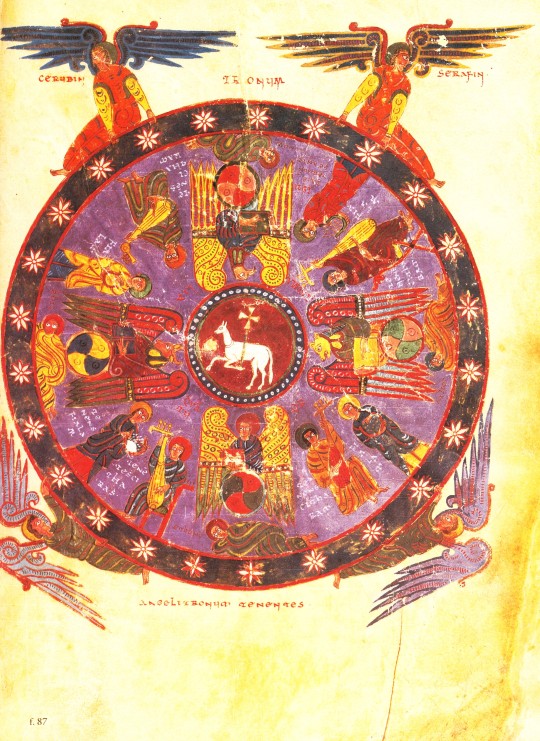

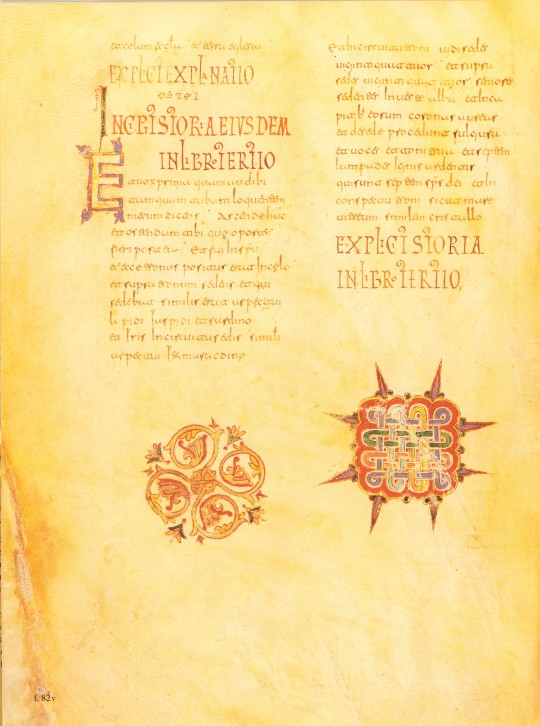
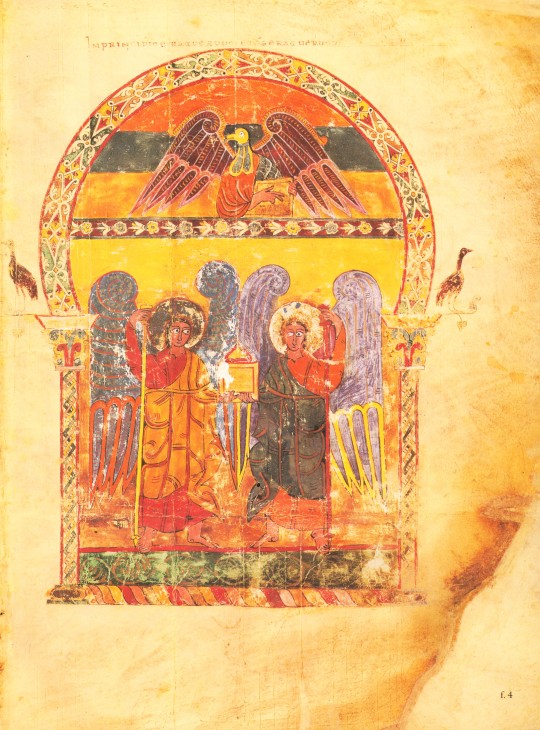




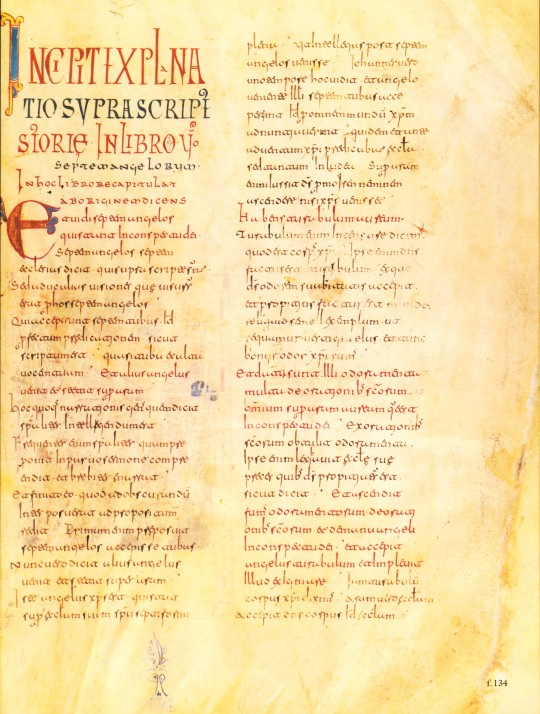
Welcome to Manuscript Monday!
In this series we will periodically focus on selections from our manuscript facsimile collection. Today we present selections from the Morgan Beatus Manuscript, reproduced as A Spanish Apocalypse, The Morgan Beatus Manuscript in New York by George Braziller, Inc. in association with the Pierpont Morgan Library in 1991. The original manuscript, made around 10th century CE at the scriptorium of San Miguel de Escalada in Spain by a monk named Maius, is the earliest surviving illuminated version of the monk Beatus of Liébana's commentary on the biblical Book of Apocalypse (also known as the Book of Revelation). The text of the Book of Revelation makes up the first part of the manuscript, and Beatus’s commentary comprises the second part. The Book of Revelation tells of the end-times in Christianity, during the final judgement of humanity by God. The story within this Biblical book was also seen by those living during the Latin medieval era as representative of the beginning of something new: God’s celestial kingdom. Due to this view of the book, many artists incorporated imagery from this part of the Bible in their work.
Produced in Al-Andalus, or Muslim-ruled Spain, the artistic style of this work combines both Muslim and Christian visual traditions to create a beautifully illuminated manuscript that supplements the commentary by the monk. This artistic style is known as the Mozarabic, which comes from the Arabic mustaʿrib, meaning ‘Arabicized’. Interestingly, this style of art can only be seen in Christian religious art and architecture from Spain at the time, as non-religious artistic objects made by Christians look so similar to Islamic versions of the same works that they cannot be identified as intentionally Christian. Some key Islamic artistic elements within the manuscript include buildings with horseshoe arches, intricate geometric and vegetal patterns as borders for larger images, and the large, bulging eyes of the illustrated animals.
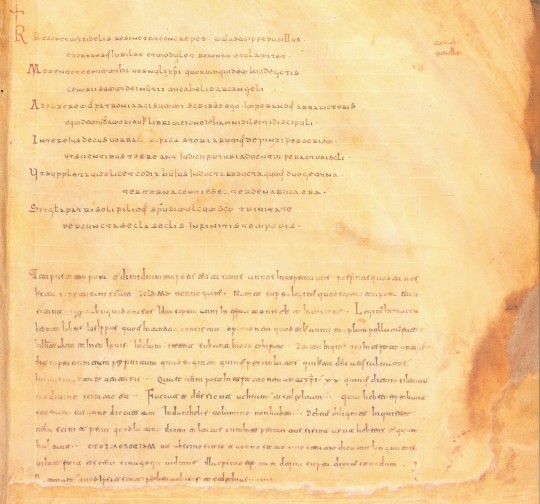
Another interesting aspect of this specific manuscript is the colophon at the end of the manuscript. It tells readers about the circumstances surrounding the creation of this book, including the maker, the patron, the year it was made, and an explanation about why Maius created the manuscript ("I write this . . . at the command of Abbot Victor, out of love for the book of the vision of John the beloved disciple. As part of its adornment I have painted a series of pictures . . . so that the wise may fear the coming of the future judgement of the world's end."). Colophons in medieval manuscripts are not usually as detailed, so the inclusion of all this information contributes greatly to the knowledge and history surrounding the Morgan Beatus Manuscript.
View more Manuscript Monday posts.
– Sarah S., Special Collections Graduate Intern
#manuscript monday#manuscripts#morgan library#morgan beatus manuscript#Beatus of Liébana#Spain#Christian art#Mozarabic#Islamic art style#facsimilies#Spanish art#Medieval art#Spanish medieval art#A Spanish Apocalypse#George Braziller#illuminated manuscripts#Sarah S.
143 notes
·
View notes
Text










Women’s History Meme || Mistresses (5/10) ↬ Subh of Córdoba (c. 940 – c. 999)
His great opportunity came in 967 when he was entrusted with the administration of the property settled by the caliph upon his favourite consort, Subh – another concubine of Christian and Navarrese origin, carried off a captive to Córdoba. From that moment Almanzor’s future was assured. As Subh’s protégé and, it was whispered, her lover, he rose rapidly to become one of the leading civil servants of al-Andalus. When the caliph al-Hakem II died in 976 his son by Subh, Hisham II, was aged only eleven. The regency which governed in his name was a triumvirate formed of al-Mushafi, the first minister of the late caliph; the leading military man of al-Andalus, the general Ghalib; and Almanzor — Moorish Spain by Richard Fletcher One of the most famous examples is Subh, the jarya of the caliph al-Hakam, one of the greatest Umayyad caliphs of the Muslim Empire in Spain. Subh was consumed by ambition. She had two major faults to answer for to the Muslims: she was a foreigner and a Christian. Obviously such things could take place without unrest only in Muslim Spain, that particularly open and cosmopolitan civilization. Subh is usually called by the historians Sabiha Malika Qurtuba, queen of Cordova, Sabiha being one of the diminutives from the root word sabah, dawn. Her original name was Aurora, which had to be Arabicized without misrepresenting it too much. But others said that the prince, entranced by the beauty of the foreigner, called her Subh because she had that amazing soft glow of the Mediterranean dawn. She was the wife of al-Hakam al-Mustansir, the ninth Umayyad caliph of the western branch which reigned in Spain with Cordova as its capital for almost three centuries (138/756 to 422/1031). — Forgotten Queens of Islam by Fatimah Mernissi
#women's history meme#subh of cordoba#spanish history#medieval#european history#women's history#history#nanshe's graphics#the video quality of all isabel torrents is such garbage#it makes want to punch something
12 notes
·
View notes
Text

In the Arabic dictionary al-Kâmûs this entry occurs: "Zott, arabicized from Jatt, a people of Indian origin. The word might be pro- nounced Zatt with equal correctness. A single individual is called Zottî." In the the preface to his Fragments arabes et persans, p. vil, et seq. See also Elliot, History of India, i. p. 100, et seg.; ii, p. IbI, et seg. Digitized
they wish to characterize others as low or contemptible, ' So-and-so is a Zotti,' or, more directly, ' You Zotti!'"1 Under the heading Nawar, the gypsies are described at great length, in terms which recall the type with which we are familiar. Bocthor says, in his French-Arabic dictionary, that " Bohémien" (particularized as "wandering Arab, Tchin- ghiare, who tells fortunes, steals, etc.") is called at Kesrowân Nawari, plur. Nawar, and at Damascus Zotti, plur. Zott? Lastly, * [See Appendix, Note A., "Zotti, a Term of Contempt."] 2 [See Appendix, Note B., "Arabic and English
0 notes
Text
In case the Hamasniks reblog this post and continue to spout Nazi rhetoric and blood libel: I said this in the context of how stupid it is to believe that there WILL be a multiethnic Palestine, unless a drastic change of heart happens. Because "free Palestine" effectively means "free us from living beside Jews" and Jews happen to be an ethnicity from that region. Currently most governments in the Middle East are hellbent on religious authoritarianism and also murdering Jews. You should see the interviews with proud Palestinian parents talking about how because their son died murdering Jews (which Hamas has publicly said is their goal) and how he will go to the the highest heaven. The third line in the motto of the Houthis is "death to Jews". Now would also be a convenient time to remind you that Jews are not the only ethnic group being oppressed and colonized in the Middle East: please look to Druze, Kurds, how Persian culture was arabicized and Islamified even more, and others that I don't know about yet. Also, if Arabs are oppressed brown indigenous people, why does half of Africa speak Arabic??? That's not normal for African countries, there are like 294829+ languages per country and HALF OF THEM SPEAK THE SAME LANGUAGE?? this is what actual colonization looks like. Please I'm begging you, pick up a history book and come back.
a free multiethnic Palestine requires you to stop murdering Jews and taking them hostage.
685 notes
·
View notes
Text
It is fun to pronounce arabic names like theyd be pronounced in english. Antoinette , charlemagne , reviere , noor ese , zayed , leila but lightly arabicized . Zeila
0 notes
Text
Bucură-te de Soare și Relaxare în Vacanța ta din Dubai
Bucură-te de Soare și Relaxare în Vacanța ta din Dubai Economie și Afaceri: Dubai este unul dintre cele șapte state care alcătuiesc Emiratele Arabe Unite (EAU) și este situat în partea de sud-est a Peninsulei Arabice, la malul Golfului Persic. Este cel mai populat oraș din EAU și un important centru economic și turistic la nivel mondial. Iată câteva informații cheie despre Dubai: Dubai s-a…
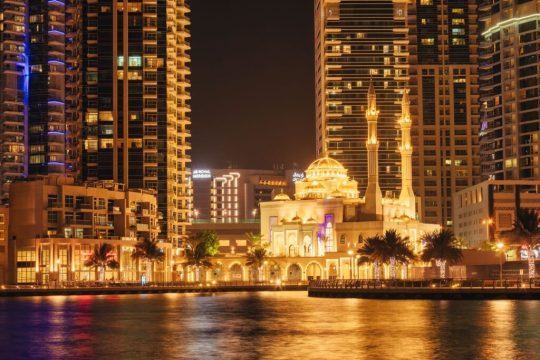
View On WordPress
1 note
·
View note
Text
I never brought up race lmao. It's just a fact that native Palestinian Jews were Arabicized before zionism. I can't with you.
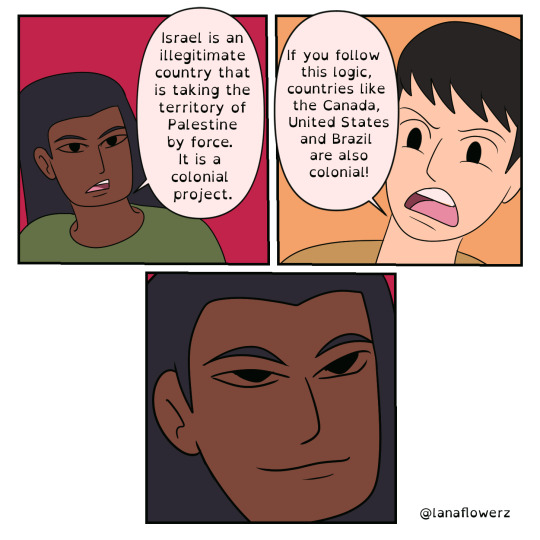
I'm gonna tell you a secret.....
26K notes
·
View notes
Photo

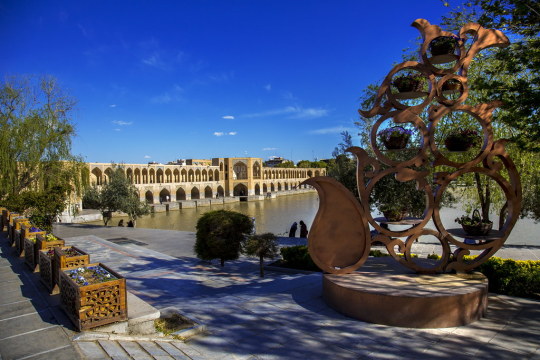



Isfahan by Reza Sobhani Via Flickr: Isfahan is derived from Middle Persian Spahān, which is attested to by various Middle Persian seals and inscriptions, including that of the Zoroastrian magi Kartir. The present-day name is the Arabicized form of Ispahan (unlike Middle Persian, but similar to Spanish, New Persian does not allow initial consonant clusters such as sp). The region is denoted by the abbreviation GD (Southern Media) on Sasanian coins. In Ptolemy's Geographia, it appears as Aspadana , which translates to "place of gathering for the army". It is believed that Spahān derived from spādānām "the armies", the Old Persian plural of spāda, from which is derived spāh 'army' and spahi , 'soldier', literally 'of the army' in Central Persian. Some of the other ancient names include Gey, Jey (old form Zi) Park, and Judea.
1 note
·
View note
Text
Aiwass nigram geminam significat, Hoor-paar-Kraat, quae cum Set, Sirio "B" aequat, velata Amenta regna et "Universi B".
AKARIS (MU): Thread-Shaper. Associatus cum Ursa maiore.
AKRABU (SAB): Scorpius Man. Scorpius.
AL (HEB): Deus, Antiquissimus, Magnus Vetus.
AL AZIF (HPL): Arabice titulus originalis "Necronomicon".
ALMASS, THE (HPL): Haunters of Gobi Desert.
ANNA (SAB) : Aere.
ANNEDOTI (SM): De foeda vel detestanda. Veteribus in amphibio a Beroso Magno nomen datum.
ANNUNAKI (Nec): Septem Orci domini. Canis Face.
ANU (SAB): Sphaera Ain. Domine de caelis. Magnus Vigilius (cum Enlil et Enki).
AOSSIC (KG): Sicut Aiwass, alius medius inter homines et Magnos Veteres.
AR (NEC): Quinque acuta stella, notatio.
ARAK (MU): De Primogenito, Deorum Seniorum.
ARRA (Nec): Sigillum Foederis Deorum Seniorum.
ARZIR (NEC): Portam.
ARUKAI (MU): Umbra Dominus et Custos montium Rhyhl (R'lyeh).
ASALLUHI (SAB): Rex, Dominus magicae. Variatio Marduk.
ASATHOTH (MU): Perditor. Insigne, incantatio ignis. Sol duplicatus, qui aestus facit. See Azathoth.
ATLACH-NACHA (CAS): Araneus ingens deus. Describitur in "Septem Geases" quasi quaedam facies in corpore ebeno salaputium, depressum inter crura plurium articulata.
Aleister Crowley
0 notes
Text
The free Palestine movement is largely being led by Jews in America.
Israel has never been an indigenous repatriation movement. It has been colonialist from its inception and only rebranded as decolonization when colonialism stopped being cool. It doesn't make any sense when the civilization that colonized the holy land is long gone. You can't repatriate your land from people who just fucking live there, and always have. DNA evidence confirms that Palestinians directly descend from ancient Canaanites, regardless of how they've been Arabicized.
The thing goyim don't seem to understand is that leftist antisemitism doesn't always look like right wing antisemitism, hence it being called leftist antisemitism.
Whilst leftist antisemitism has always existed, it recently has taken the shape of antisemites trying to hide their antisemitism as "activism" for palestine. And this sucks for two reasons. 1) antisemitism bad 2) palestinians deserve people who actually care and aren't using their cause as a mask for antisemitism.
What leftist antisemitism tends to be, is making jews the exception to leftist values. This looks like;
Denying the rape which happened during Oct 7th (i thought we were supposed to believe all victims?)
Putting a cut off date for a group to be considered indigenous (i thought we were supposed to respect and uplift all indigenous peoples?)
Assuming that all jews are genocidal and support the Israeli government (i thought we all agreed it was bad to assume people are their governments or even are the governments of a country they don't live in but their ethnicity is from?)
and there are sooo many more examples.
This is also the reason why a lot of leftists have a hard time picking up on leftist antisemitism. It is coming from your circles in a way which is not what people expect. It is coming from people you may trust, people who's words you respect. And thats exactly why it is really scary for jews.
People often wonder how Nazi Germany reached the level of antisemitism it did before the holocaust, and whilst we aren't at holocaust levels yet, it had to start somewhere and this is how it started. From everyone falling for antisemitic conspiracy theories and rhetoric.
Leftist antisemitism looks different than right wing antisemitism BECAUSE it's coming from the left.
717 notes
·
View notes
Text
استريحي
ليس للدور بقيّة
انتهت كلّ فصول المسرحيّة
فامسحي زيف المساحيق
و لا ترتدي تلك المسوح المرميّة
و اكشفي البسمة عمّا تحتها
من حنين .. و اشتهاء .. و خطيّة
كنت يوما فتنة قدسّتها
كنت يوما
ظمأ القلب .. وريّه
#أمل دنقل
#نصوص شعرية#شعر#اقتباسات شعرية#شعر عربي#أمل دنقل#قصيدة شعر#قصيدة#أبيات فصحى#أبيات شعرية#أبيات#arabic#arabic poems#arabic poetry#arabic poem#love poem#arabice quotes
26 notes
·
View notes
Text
Türkçe ve Arapça’da en çok kullanılan kelimeler ve cümleler 21 جمل و كلمات الاكثر استخداما في اللغة التركية و العربية ٢١
Türkçe ve Arapça’da en çok kullanılan kelimeler ve cümleler 21 جمل و كلمات الاكثر استخداما في اللغة التركية و العربية ٢١
751İnanıyorum ki başaracaksın��ْتَقِدُ أنَّكَ سَتَنْجَحُ752Zannediyorum o şuan çarşıdadırأَظُنُّ أَنَّهُ الْآنَ فِي السُّوقِ753Öğretmenin sözünü beğeniyorumيُعْجِبُنِي كَلَامُ الْمُعَلِّمِ754Hoca bugün yokاَلْأُسْتَاذُ غَيْرُ مَوْجُودٍ الْيَوْمَ755Hoca bugün gelmeyecekلَنْ يَأْتِيَ اَلْأُسْتَاذُ الْيَوْمَ756Babam uzun boyludurأَبِي طَوِيلُ الْقَامَةِ757Babam kısa boyludurأَبِي قَصِيرُ الْقَامَةِ75…

View On WordPress
#0 dan arapça öğreniyorum#arabe#arabic#Arabice#Arabies#Arabisch#arapça çekimler#arapça çeviri#arapça öğren#arapça öğrenكلمات سهلة بالتركیة#arapça cümle#arapça cümle kurma#arapça cümleler#arapça dil bilgisi#arapça fiil#Arapça fiil cümlesi#arapça günlük kelimeler ve cümleler#arapça günlük konuşmalar#arapça kalıp#arapça kalıplar#arapça kelime#arapça kelimeler#arapça ne demek#arapça türkçe çevirisi#arapça tercümesi#bina#dili geçmiş zaman#Арабча#emsile#emsilei muhtelife
0 notes
Text
Buy History of Hindi Literature
History: Like various other current Indian tongues, Hindi has created from Sanskrit, through the Middle Indo-Aryan Prakrit lingos and Apabhramsha of the Middle Ages. Notwithstanding the way that there is no understanding for a specific time frame outline, Hindi began as close by vernaculars like Braj, Awadhi ultimately Khari Boli after the turn of tenth century In the scope of very nearly 1,000 years of Muslim effect, for instance, when Muslim rulers controlled a great deal of northern India during the Delhi Sultanate and the Mughal Empire, various Persian and Arabic words were acclimatized into khari boli and was called Urdu. Since essentially all Arabic words dropped through Persian, they don't defend the main phonology of Arabic.

Formal language is obtained from Sanskrit, de-Persianized, de-Arabicized. Insightful Hindi, or Hindi-Urdu, has four combinations: Hindi (High Hindi, Nagari Hindi, Literary Hindi, Standard Hindi); Urdu; Dakhini; Rekhta. State language of Delhi, Uttar Pradesh, Rajasthan, Madhya Pradesh, Bihar, Himachal Pradesh. Lingos and tongues in the Western Hindi social occasion are Hindustani, Haryanvi, Braj Bhasha, Kanauji, Bundeli; see separate areas.
The early season of Hindi composition—the late initial thousand years A.D. — is tended to by parts of severe and Hindi Literature online insightful section that set forward the resolutions of Buddhism, Jainism, and Si-vaism, religions conflicted with to standard Hinduism and the position system. Inferable from the prevalence of Sanskrit as the language of composing, including exacting and insightful composition, Hindi composing made as a strategies for enunciation of people and got related with fanatic social examples.
From the tenth to fourteenth many years a crude epic refrain made in Hindi vernaculars. Court craftsmen commended the strategic undertakings and sincere encounters of their allies in story pieces called raso. The record piece Prithiraj Raso, by Chand Bardai (second half of the twelfth century), portrays scenes in the skirmish of Prince Prithwiraj III of Delhi against Muslim intruders. The record piece Bisaldev Raso, by Nalpati (c. thirteenth century), takes after a genuine song. For a huge stretch, the raso were given over orally; they in like manner acquired different additions and varieties and their language was modernized.
Bhakti, an advancement for severe and social change that incorporated northern India between the fifteenth and seventeenth many years, conflicted with standing maltreatment and hoped to set up cordial value. The advancement gave Hindi composing vote based theme and caused new conceptual designs. The craftsman and academic Kabir (c. 1440–c. 1518) firmly impugned ordinary Hinduism, Islam, and the station system in his tunes and segment in the Braj tongue and in languages of Eastern Hindi. His outrageous viewpoints were taken up in made by Nanak (1469–1539), the writer of Sikhism, who set forward his musings in works written in Punjabi and in vernaculars of Western Hindi. Others writers in this training consolidate Dadudayala (1544–1603) and Sundar Das (1596–1689).
1 note
·
View note
Text
Fossilized Heritages in Muslim Nerccas
At both Kondōtti and Kūttāyi the nerccas honour saints, but in each case the reason for holding them is quite distinct ... At Kondōtti offerings are made at the tomb of the founder of the line of Kondōtti Taṇṇaḷs, Shaykh Muḥammad Shāh I. Shaykh Muḥammad Shāh was a Persian-speaking Shī’a Muslim who came from a village near Bombay to settle in Kerala during the latter half of the eighteenth century. He was granted land in Kondōtti, probably by Tipu Sulṭān, one of the Muslim rulers of Mysore who controlled northern Kerala between 1765-1792. The grant was apparently made in recognition of Shaykh Muḥammad Shāh’s special sanctity, for as songs sung by the women of Kondōtti make clear Shaykh Muḥammad Shāh was a Ṣūfī, a follower of the famous Chistī order of Ajmer in Rajasthan. He is described in the songs as the khalīfa, a common title of Ṣūfī leaders, and is called Shāh Awlī, a title used for saints and often specifically for Ṣūfīs. It is said in the songs that Shaykh Muḥammad Shāh arrived in Kerala to ‘show the right path’, that is, the devotional or mystic path, and in Kondōtti his intent is memorialized by the presence of a building known to everyone there as the Takiyya, a kind of lodge for the Ṣūfī order. Of the three elements in the Kondōtti Taṇṇaḷ’s heritage, the Shī’a, the Persian, and the Ṣūfī, the Shī’a has all but disappeared. Nearly all the Māppiḷas are Sunnīs, and the Taṇṇaḷs long ago began to adapt themselves to this situation. The present Taṇṇaḷ represents the third generation of Sunnīs in his line, and the Shī’a memory is now preserved only in fragments of some songs, religious invocations, and the derisive comments of Māppiḷas outside of the Kondōtti Taṇṇaḷs’ sphere of influence. The Persian element is, in contrast, immediately apparent to any visitor in Kondōtti. Most striking is the tomb of Shaykh Muḥammad Shāh I. Known in Kondōtti by the Persian word dargāh, the tomb is the only substantial piece of North Indian Muslim architecture to be seen in northern Kerala. The house of ‘Abd al-Raḥman Taṇṇaḷ, which was built by his grandfather, also has a name, Āshiyāna, as well as some Persian decorative motifs, particularly in the windows. The previous generation of Kondōtti Taṇṇaḷs knew Persian and ‘Abd al-Raḥman's family possesses a number of handwritten Persian books, some of them done in elegant nasta‘līq. This Persian strain in Kondōtti is so striking, of course, because most Muslim settlers in Kerala originally came from Arabia. The Māppiḷas’ Islamic language is Arabic, rather than Persian or Urdu, while their local dialect is an arabicized form of Malayalam known as Māppiḷa or Arabie Malayalam, which in its written form uses Arabic script with a special diacritical system to express sounds peculiar to Malayalam. The Takiyya is a visible reminder of the third element in the Kondōtti Taṇṇaḷs’ cultural and religious heritage, their role as Ṣūfī shaykhs. However, the tradition of a mystic or devotional order is present today only in an attenuated form. The Kondōtti Taṇṇaḷs are certainly aware of their Ṣūfī background, which is, of course, proclaimed by the title shaykh, which every senior Taṇṇaḷ takes before his name. ‘Abd al-Raḥman Taṇṇaḷ himself pointed out that pilgrims to Kondōtti previously used to prostrate themselves before the senior Taṇṇaḷ and that these devotees were referred to as murīds, or disciples, while the Taṇṇaḷ was called the murshid, or teacher. Such prostration of disciples before their superiors has in the past been a characteristic ritual in many Islamic mystic orders. The Kondōtti Taṇṇaḷs have, though, completely forgotten their connexion with the Chistī order an there is no religious activity peculiarly characteristic of Ṣūfī rituals which is now being conducted at the Takiyya or the mosque. Thus, as far as the popular consciousness is concerned it seems that Shaykh Muḥammad Shāh I occupies no special status except that of a local Ṣūfī saint. The Kondōtti Taṇṇaḷs’ Shī’a, Persian, and Ṣūfī heritage makes them unique among the members of the Māppiḷa ‘ulamā. At present, however, none of these elements is a dominant motif at the annual nercca, nor do they appear to have been particularly important to the majority of the Māppiḷas who attended the festival in 1975. These elements do give a certain colouring to the festival. This is particularly true of the Taṇṇaḷs’ role as Ṣūfī shaykhs, which is reflected in the unusual sanctity accorded to them by their immediate followers as well as by the latter's continued use of the term murshid as a mode of address. However, most of the actual ceremonies at the Kondōtti nercca are closely analogous to those held at other festivals.
- Stephen F. Dale and M. Gangadhara Menon (“Nerccas”: Saint-Martyr Worship Among the Muslims of Kerala)
1 note
·
View note